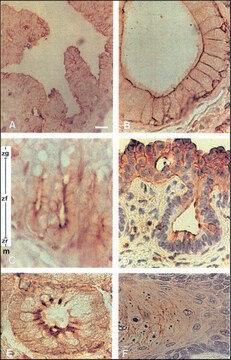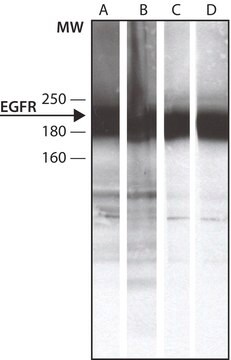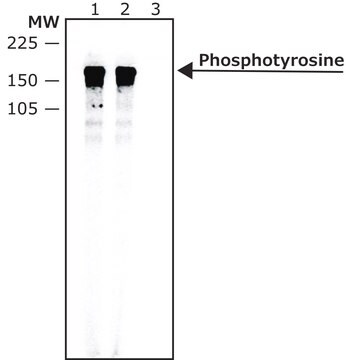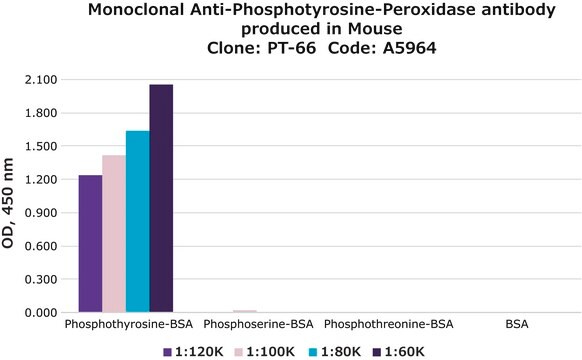Key Documents
P5872
Anti-Phosphotyrosine antibody, Mouse monoclonal
clone PT-66, purified from hybridoma cell culture
Synonim(y):
Monoclonal Anti-Phosphotyrosine, Phospho-Tyr, Phospho-tyrosine, p-Tyr
About This Item
Polecane produkty
pochodzenie biologiczne
mouse
Poziom jakości
białko sprzężone
unconjugated
forma przeciwciała
purified immunoglobulin
rodzaj przeciwciała
primary antibodies
klon
PT-66, monoclonal
Postać
buffered aqueous solution
opakowanie
antibody small pack of 25 μL
stężenie
~2 mg/mL
metody
flow cytometry: suitable
immunocytochemistry: suitable
immunohistochemistry: suitable
immunoprecipitation (IP): suitable
indirect ELISA: 0.5-1.0 μg/mL using phosphotyrosine conjugated to BSA
radioimmunoassay: suitable
western blot: 0.25-0.5 μg/mL using total cell extract of human platelets
izotyp
IgG1
Warunki transportu
dry ice
temp. przechowywania
−20°C
docelowa modyfikacja potranslacyjna
unmodified
Szukasz podobnych produktów? Odwiedź Przewodnik dotyczący porównywania produktów
Powiązane kategorie
Opis ogólny
Specyficzność
Immunogen
Zastosowanie
- immunoblotting,
- immunofluorescence,
- immunohistochemistry
- immunocytochemistry
- flow cytometry
- immunoprecipitation
- enzyme linked immunosorbent assay (ELISA)
- radio immunoassay (RIA)
- immunoaffinity isolation
Działania biochem./fizjol.
Postać fizyczna
Oświadczenie o zrzeczeniu się odpowiedzialności
Nie możesz znaleźć właściwego produktu?
Wypróbuj nasz Narzędzie selektora produktów.
Kod klasy składowania
12 - Non Combustible Liquids
Klasa zagrożenia wodnego (WGK)
WGK 2
Temperatura zapłonu (°F)
Not applicable
Temperatura zapłonu (°C)
Not applicable
Certyfikaty analizy (CoA)
Poszukaj Certyfikaty analizy (CoA), wpisując numer partii/serii produktów. Numery serii i partii można znaleźć na etykiecie produktu po słowach „seria” lub „partia”.
Masz już ten produkt?
Dokumenty związane z niedawno zakupionymi produktami zostały zamieszczone w Bibliotece dokumentów.
Klienci oglądali również te produkty
Produkty
Review a high-throughput ELISA-based method to identify peptide substrates for class-specific and/or enzyme-specific Protein Tyrosine Kinases (PTKs) that can be utilized for the detection of kinase activity both in vivo and in vitro.
Nasz zespół naukowców ma doświadczenie we wszystkich obszarach badań, w tym w naukach przyrodniczych, materiałoznawstwie, syntezie chemicznej, chromatografii, analityce i wielu innych dziedzinach.
Skontaktuj się z zespołem ds. pomocy technicznej








